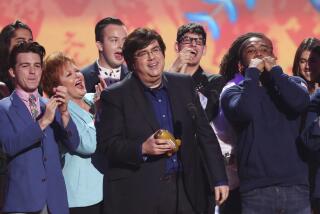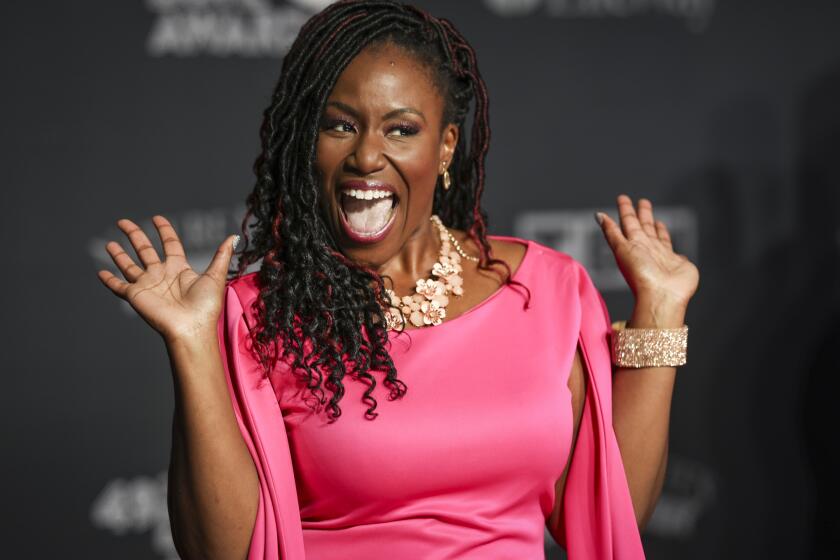The Amazon pilots (Part 2): Children’s shows
Amazon’s TV “pilots” (see my previous post and this relevant website) come in two flavors: grown up comedies, most of which betray basic-cable (and even premium-cable) values in terms of content and language, and children’s shows, which, conversely, are largely aimed at the youngest of the young and contain a mandated educational component.
We’ll take the small-fry series first. They are meant to be realized in a number of forms -- animation, puppet animation, puppets, CGI and live-action -- but are presented for the most part as rough-sketch, storyboard-like “animatics,” with each series containing a snippet or two of what the show would look like if it is fully produced. (Only the 2-D animated “Sara Solves It” is in a completely finished state.)
As a group they skew toward the cute and comforting (even as they center on children, or child substitutes, who are allowed or even encouraged to roam free without adult supervision). They are sing-songy and pedagogically repetitive, with encouraging catch phrases (“Let’s get creative!” and “I figured it out” and such), and on the whole are perhaps too obviously meant to be Good For You. Children need structure and familiarity, but anarchy and noise and strangeness are good for them too.
PART 1: Amazon ‘TV Pilots’ are set to fly
In no particular order:
“Sarah Solves It” comes from Carol Greenwald (“Arthur”) and Angela Santomero (“Blue’s Clues”); Santomero is also behind the Amazon pilot “Creative Galaxy.” Computer-animated in 2-D, it’s the only of the kids’ pilots that looks finished; the look is colorful, flat and thick-lined (reminiscent a little of PBS’ “Word Girl”). The opening image of a busy New York-type street suggests an urban funkiness it’d be nice to see more of, the big city being as much a wonderland as Wonderland. The rest of the episode takes place inside the apartment building where Sara lives with her little brother Sam; interiors integrate number shapes -- for it is a math show -- and a talking elevator who gives occasion for ciphering. In the pilot, the siblings must find a pizza party (a lot of going up and down floors) and recover Sam’s doll (ditto) from Victor Vector (math again), a lonely bully. Lively, not too sweet. I liked it.
Santomero’s other series is “Creative Galaxy,” a participatory arts show hosted by Artie, an enthusiastic animated green alien, accompanied by Epiphany, his parroting sidekick-pet. Artie’s got some pom-poms (“pom-poms make me excited!”), which, with a pair of pipe cleaners and a couple of buttons, he works up into the semblance of a bug. (Will children feel disappointed when their own pom-pom bugs refuse to come alive?) All the muses will get their due, should it continue, but painting takes the pilot, with trips to the Museum Planet and Painting Planet, where Artie and you will learn about pointillism -- you probably did not see that coming -- from a talking paintbrush. “Pointillism is an amazing idea!,” cries Artie. “Pointillism lights me up!” It is all in the service of spicing/sprucing up the library that Artie’s architect mother has designed, whose bare walls are driving away the customers, because “Blah’s not good!” The show itself, contrariwise, is all exclamation points; there were times I wanted to ask it to go into the next room and play quietly.
“Tumbleaf” is by Andrew Hodges, of the Burbank-based stop-motion house Bix Pix Entertainment; the fully realized snippets of puppet animation seen here are quite rich and beautiful and magic-worldy (though the animatics are not without their own charm). “Numinous” would not be out of line. Fig is a little blue fox who lives in a beached shipwreck with a tree growing through it; it is full of colorful little puffy things that make the kind of noises you would expect a colorful little puffy thing to make. He goes about with a pet caterpillar named Stick who rides in a sort of holster strapped to his arm, and every week will have to figure out what to do with whatever object materializes in his “finding room.” Here it is a kite, which he endeavors to learn how to fly. There are chickens who make pancakes and a porcupine who knits. (She already has the needles.) The finale, in which, wearing a winged suit of yarn, Fig takes flight himself, is not good physics, but it does get Stick out of a tree. Appealingly casual in tone and a little bit strange, it is, all in all, my favorite of the six.
PHOTOS: Cable vs. broadcast TV ratings
The scientific “Annebots” is from J.J. Johnson (“Dino Dan”) and skews a little older age-wise; though seen here as a cartoon, it’s intended to be live-action (heavy on special effects) and comes with a separate trailer that attractively pictures it as such. The story begins when Nick’s mother sends him to the store on his bicycle, even though they live in a new town and he has no idea where anything is; along the way he happens upon a pack of junkyard androids and their creator, Anne. “Wait? You’re a girl,” he says when she lifts her welder’s mask. So we have already learned something about persistent gender stereotypes and their subversion. (“So you’re like smart and stuff,” says Nick, who is no Einstein, yet wise in the ways of fun -- a bit of an old trope itself.) The pilot demonstrates that, though he may not be as strong, eagle-eyed, nimble or shock-proof as Anne’s mechanical minions, he is capable of fetching her some vinegar. There is also a pigeon in a jet pack.
The stamp of the Jim Henson Co. is upon the day-care metaphor “Teeny Tiny Dogs,” created by Howard Baker (“Rugrats”) and produced by Lisa Henson (“Sid the Science Kid”). It would be puppetry in its final state, and the live-action clips, featuring Butch the alpha pug, have a likable, knockabout, in-the-moment energy the animatics do not adequately convey. The pilot involves getting a shy puppy new to canine nursery school to come out and play (with assurances that it is also all right not to come out and play, so as not to pile a anxiety upon anxiety). “You smell a little sad,” another dog says of him. “Or is that maple syrup?” A game of tug-of-war changes all that: “You smell happy now. Like a hamburger pie.” (Not so happy for the cow, though.)
“Positively Ozitively,” which uses the miracle of public domain to appropriate characters (or character-types) from “The Wizard of Oz,” feels pretty textbook-ordinary, in spite of its lively storyboard graphics. (It would be rendered ultimately in 3-D CGI, which not all of us find all that charming.) Dot lives in modern-day Kansas (there is such a thing, I am told) with her mother, the original Dorothy Gale; any time she has a question, apparently, she hops into a hot-air balloon and goes back over the rainbow because “it’s easy to get creative in Oz.” (They do hammer on about creativity in these things.) Juvenile -- and in some cases, gender-switched -- variants of the Scarecrow, Tin Man and Cowardly Lion round out the brain/heart/courage trust. (“Thinking, caring, being brave, those are all great ways to be when you’re trying to be creative.”) Glinda comes with a June Foray-derived whine and a runaway “wishing cap” -- named Wishy, wouldn’t you know -- that Dot spends the episode pursuing, only to learn that The Power Was Within Her All Along. No flying monkeys, no Wicked Witch.
More to Read
The complete guide to home viewing
Get Screen Gab for everything about the TV shows and streaming movies everyone’s talking about.
You may occasionally receive promotional content from the Los Angeles Times.







